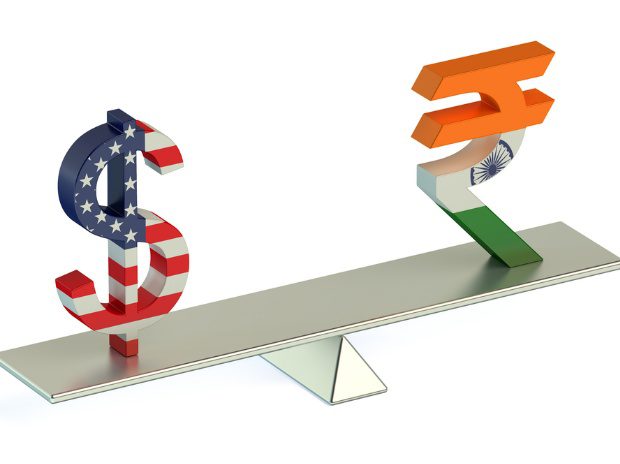The US seems to be unreasonably upset that India’s central bank (RBI) periodically buys small lots of US dollars, as and when necessary, to steady Rupee’s exchange rate. In fact, such a policy is, indirectly, to the advantage to the US. But, for this intelligent forex trading by RBI, Rupee’s exchange rate would have drastically fallen — maybe to Rs100 for a US$. An analysis, for Different Truths.
Is the United States of America really serious about a strategic partnership with India? Not all political, diplomatic and economic policy directions from the US side suggest such a possibility. In terms of trade, aid, and economic relations, it would appear the US is constantly trying to squeeze India. The US is neither respectful nor reasonable towards India on those fronts. Overall, the US does not behave like a reliable ally of India. Since 1992, India has been trying to accommodate the US on a number of global and bi-lateral platforms — from civil-nuclear cooperation to the latest import expansion to compress its small trade surplus with the world’s richest nation. A similar honest gesture from the US is, however, missing.
In response to the US initiative to protect the global trade, economic and diplomatic order from a fast-growing influence of China, especially through Asia and Africa, India has even joined a strategic partnership quadrangle with the US, Japan, and Australia. There is no doubt that such a partnership is also important to India’s own economic and diplomatic ascendency on the global stage. India’s foreign policy has been more or less steady towards achieving such a goal through the last four governments since BJP’s Atal Behari Vajpayee formed the first full-term NDA government in 1999. India’s diplomatic and economic relations with the US, Israel and its Pacific region allies such as Japan and Australia has steadily grown through this period. Unfortunately, unpredictable US trade and economic policies, including its latest treasury percep tion of India, provide confusing signals.
tion of India, provide confusing signals.
Last week, the US Treasury added India to its ‘watch list’ of five countries ‘with potentially questionable foreign exchange policies.’ It said the “monitoring list” includes those “major trading partners that merit close attention to their currency practices.” In addition to India, the US Treasury semi-annual report to Congress names five countries that continue on the list: China, Germany, Japan, Korea and Switzerland. Linking India with these five of the world’s top export-led economies and large net hoarders of US$ is totally irrational and uncalled for. All these countries have been running huge trade surpluses with the US, year after year. All of them boast internationally convertible currencies. Of them, China, which runs the world’s biggest trade surplus, is probably the biggest currency manipulator. Import-led India would appear to be the least.
To give an example, Indian Rupee’s (INR) conversion ratio is linked on-ground with its true strength and status vis a vis India’s foreign trade, foreign borrowing, internal debt, debt-to-GDP ratio and RBI’s forex reserve. INR’s exchange value is not manipulated to push export unlike countries such as China where Yuan’s (Renminbi) exchange rate with USD has remained nearly constant for years despite its huge trade surpluses and Dollar hoardings — the largest by any country outside the US. Last year, the US had a trade deficit of $375 billion with China against its total global trade deficit of $566 billion. In comparison, the small US trade deficit with India, $23 billion, last year, is still shrinking. The US is free and most welcome to “monitor and combat unfair currency practices while encouraging policies and reforms to address large trade imbalances,” as the US treasury secretary said in a statement, last week. Germany “has the world’s largest current account surplus” and has made “little to no progress in reducing this massive surplus (in) the past three years,” he said. Japan maintained a trade surplus of nearly $70 billion. The US Treasury called for all the countries on the list to implement economic reforms to address their surpluses.
The US seems to be unreasonably upset that India’s central bank (RBI) periodically buys small lots of US  dollars, as and when necessary, to steady Rupee’s exchange rate. In fact, such a policy is, indirectly, to the advantage to the US. But, for this intelligent forex trading by RBI, Rupee’s exchange rate would have drastically fallen — maybe to Rs100 for a US$. RBI’s exchange rate policy keeps Rupee more or less stable even in the face of large exchange outgo on accounts of repatriation of profits, royalties, technical fees and head office expenses by foreign direct investors and market investment and profit repatriation by foreign institutional operators.
dollars, as and when necessary, to steady Rupee’s exchange rate. In fact, such a policy is, indirectly, to the advantage to the US. But, for this intelligent forex trading by RBI, Rupee’s exchange rate would have drastically fallen — maybe to Rs100 for a US$. RBI’s exchange rate policy keeps Rupee more or less stable even in the face of large exchange outgo on accounts of repatriation of profits, royalties, technical fees and head office expenses by foreign direct investors and market investment and profit repatriation by foreign institutional operators.
India’s US$ reserves at $403 billion in April 2018, would look ridiculously low in comparison with China’s reserves (including Honk Kong but excluding Macau) of $3.447 trillion in May 2017; Japan’s $1.118 trillion in June 2017 and Switzerland’s $791 billion in January 2018. Saudi Arabia and even tiny Taiwan have more US$ hoards than India’s. The US Treasury has full knowledge about such details. By adding India to the group of five, the US department seems to have done a big financial injustice. Similarly, the US has shown little regards towards India, its so-called ‘strategic ally’, by clubbing it with China for high import duties on steel and aluminium while leaving its other ‘strategic partners’ outside this punitive tax domain.
Not many political and business thinkers in the US support such a casual treatment of India, which is emerging as its major economic partners. For instance, John Chambers, US-India Strategic Partnership Forum chairman, says it is committed to creating the most powerful partnership. “Promoting bilateral trade is an important part of our work, but our mission reaches far beyond this. It is about business and government coming together in new ways to create meaningful opportunities that have the power to change the lives of citizens. We are entering a new era based on a strategic partnership between the US and India — one where we will work closely together with business and government leaders to achieve our goals of driving economic growth, job creation, innovation, inclusion, and entrepreneurship.” The US economic and trade actions, however, seem to belie John Chamber’s vision and mission of his country’s ‘strategic partnership’ with India.
Nantoo Banerjee
©IPA Service
Photos from the Internet
#RBI #Rupee #Dollar #US #StrategicPartnership #Finance #WorldEconomy #RateOfExchange #DifferentTruths






 By
By
